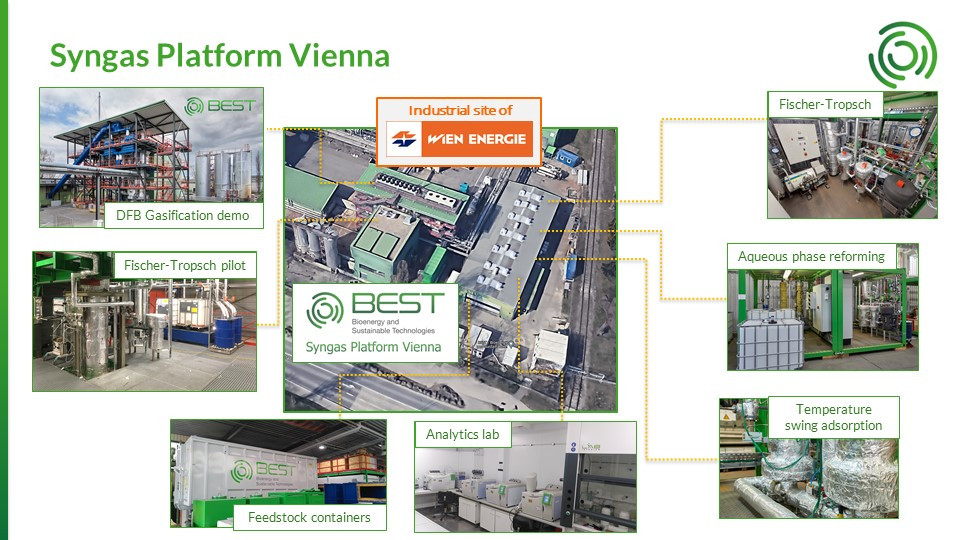Synthetic gas from residual materials: Syngas Platform Vienna
At the Syngas Platform Vienna, residual materials and biomass such as damaged wood, waste or sewage sludge are used to produce hydrogen-rich synthesis gas.
Syngas Platform Vienna: The world's first of its kind for the production of synthesis gas
In a further process step, this synthetic gas is synthesized into fuels such as diesel, SAF or methanol. The plant has been erected within the COMET project Waste2Value and helps to gain further operating experience. The entire process chain is the subject of research activities. From the raw material used, such as damaged wood, sewage sludge or biomass, to synthetic gas production, gas purification, synthesis and finally the use of the renewable fuel.
The Syngas Platform Vienna is the first plant of its kind in the world to demonstrate this technology in a single, industry-oriented and continuous process chain. The knowledge gained from the research will make it possible to assess and define the overall process both economically and technically. The Syngas Platform Vienna forms the basis for a planned implementation on a larger industrial scale to produce synthesis gas from residual materials and biomass.
Project launch and commissioning
The Syngas Platform for the production of synthetic gas from waste materials and biomass was commissioned in March 2022.
If you are interested in participating in our project or would like us to participate in your project, please contact our project coordinators:
Matthias Kuba: matthias.kuba@best-research.eu
Gerald Weber: gerald.weber@best-research.eu

Use, definition, utilization and more: Our Syngas Platform at a glance
Our vision: The conversion of residual materials in order to use them as storable energy sources.
Our area of expertise: Converting biomass and residues such as waste wood or sewage sludge into synthesis gas through thermochemical gas production and making them usable.
The process chain: gas production - gas processing - gas application
The process: Biomass and waste materials are converted into synthetic gas.
The products: synthetic fuels such as FT diesel, SAF, methanol and gaseous energy sources such as H2 (hydrogen) or synthetic natural gas.
CO₂ neutrality: Through the sustainable use of raw materials such as biomass, sewage sludge, wood and waste, our synthesis gas promotes CO₂ neutrality.
Storing electricity: Surplus electricity from wind and solar power plants is used and stored for H2 synthesis.
Use of synthetic gas: Synthesis gas is used directly to generate electricity and heat, and clean fuel gas can also be produced from ash-rich residues such as waste wood.
Further processing: Synthesis gas is further processed into storable energy sources and made usable for existing fuel and natural gas infrastructures.
Development and optimization: Thanks to our expertise and experience, we are able to continuously develop our own infrastructures and optimize entire process chains.




.jpg)
